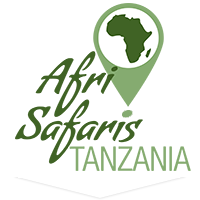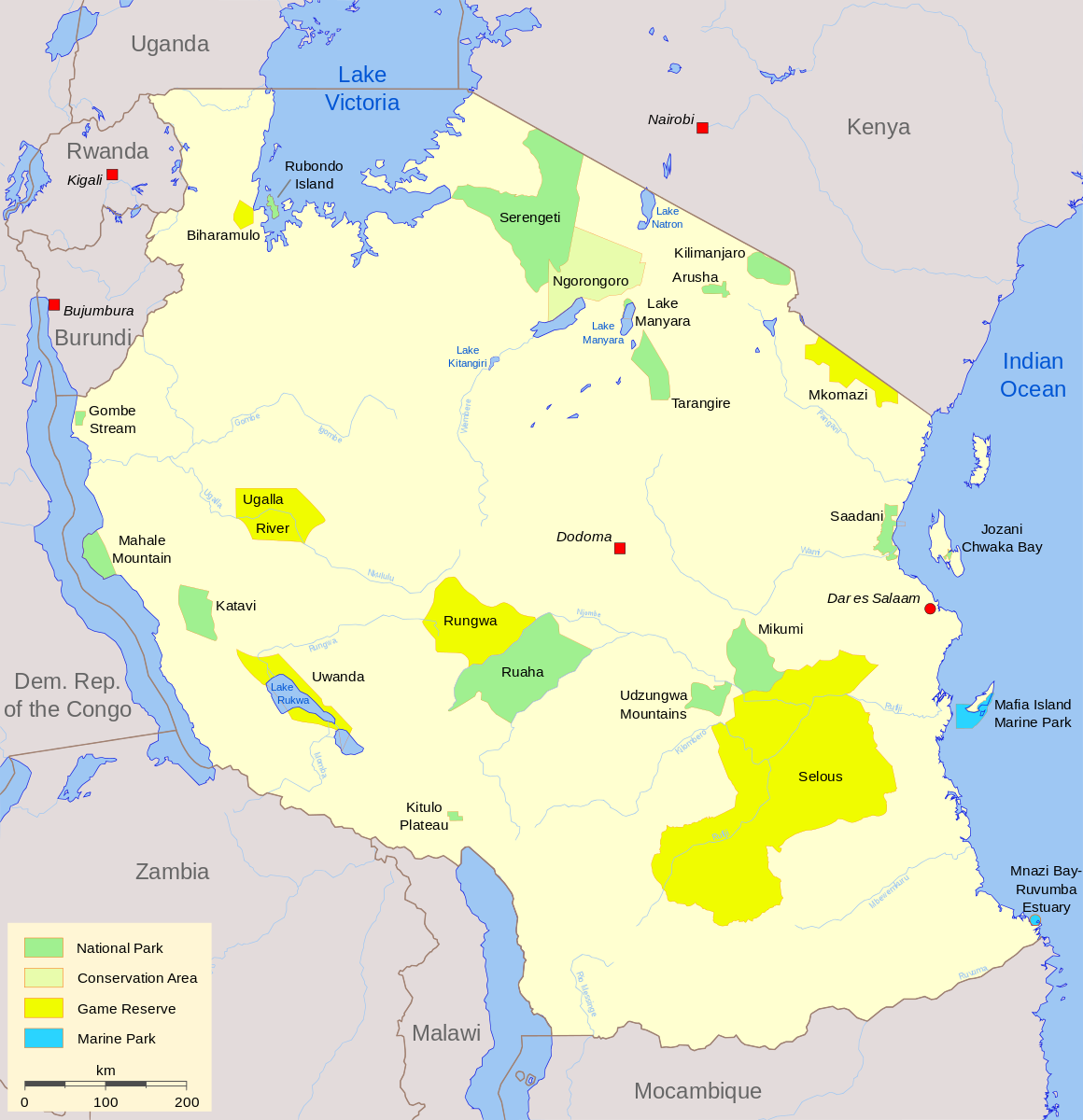Kilimanjaro National Park
Kilimanjaro National Park is one of Tanzania's main national parks. It covers an area of 756 square kilometers, was declared a park in 1973 and was opened to public access in 1977. The park was declared a World Heritage Site by UNESCO in 1987. It is located in the northeastern part of Tanzania on the border with Kenya. The main entrance to the park, the Marangu Gate is located about 30 km north of the city of Moshi, at 1,870 m altitude.
In the area of the park is Mount Kilimanjaro, with its three craters: in the west Shira, with an altitude of 3,962 m, in the east Mawenzi (5,149 m) and in the center Kibo, the highest peak in Africa (5,895 m). Between Kibo and Mawenzi lies a platform of about 3,600 ha, called "the saddle", which is the largest tundra on the continent. The summit of the volcano is covered by a perennial glacier.
The vegetation of Kilimanjaro can be divided into four zones: the rainforest area (from 1,801 m to 2,700 m), rich in lush vegetation dominated by tall trees; the moor area (from 2,700 m to 4,000 m), mainly inhabited by arbustifere species; the high altitude desert area (from 4,000 m to 5,000 m), desert and desolate; the summit area (from 5,000 m to 5,895 m), often covered by snow and subject to extreme weather conditions.
The park is rich in animal species: over 140 species of mammals have been counted including antelopes, baboons, vervet monkeys and buffalo in the area of the aquifers and, despite the growing agricultural exploitation, even a population of a few hundred elephants survives and it is not uncommon to encounter also some leopard specimens.
The Kilimanjaro: a mountain full of charm and wrapped in myth
Trekking - The Marangu Road route
Climbing the Kilimajaro is a trek within the reach of all those who love hiking in the mountains as a hobby, and is a destination for visitors from all over the world; it is however advisable to have a good physical preparation, the support of a guide and local porters, as well as an availability of at least 6 days.
The paths to reach the summit of Kilimanjaro are different and most on the southern side of the volcano. The slopes on the northern side are reserved for more experienced mountaineers. The Mweka and Umbewe trails are the fastest to reach the top but they are also the most dangerous, in part the Umbewe path is often used for the descent.
The Machame trail is one of the most spectacular, but it does not offer many shelter possibilities. The most comfortable way, and also the most used by tourists, is the Marangu Road.
During the ascents you can sleep in tents or when possible you can use the shelters; these are very spartan shelters, which offer accommodation in promiscuous dormitories. They do not have a catering service: meals are prepared in a common kitchen, with a wood fire, and each group uses its own food supplies.
Trekking is organized with an expert guide and porters. Tanzania's climate makes it possible to climb Kilimanjaro practically all year round, although temperatures and rainfall vary according to the season and it is therefore a good idea to start informed about the weather conditions of the chosen season for climbing.
From December to February the days are longer and the temperatures are milder (maximum around 25-30 ° C), from July to October the climate is drier and temperatures are lower. The months of April and May are the wettest but it is still possible to attempt the climb to the summit.
Before crossing the border of the park (at 2700 m) you pass by cultivated slopes, then through a lush mountain forest inhabited by elephants, leopards, buffaloes, small antelopes and several species of monkeys. Further up we find the marsh area covered with ivy and giant lobelias. Above 4000 meters, we will encounter a surreal alpine desert with its meager vegetation of mosses and lichens, which gives way to the winter wonders of ice and snow and to the splendor of the top of the "Roof of Africa".










